As any eCommerce or dropshipping business owner knows, social media is a powerful tool for driving sales and growing your customer base. And of all the social media platforms out there, Facebook and Instagram are two of the most popular (and effective) options for advertising.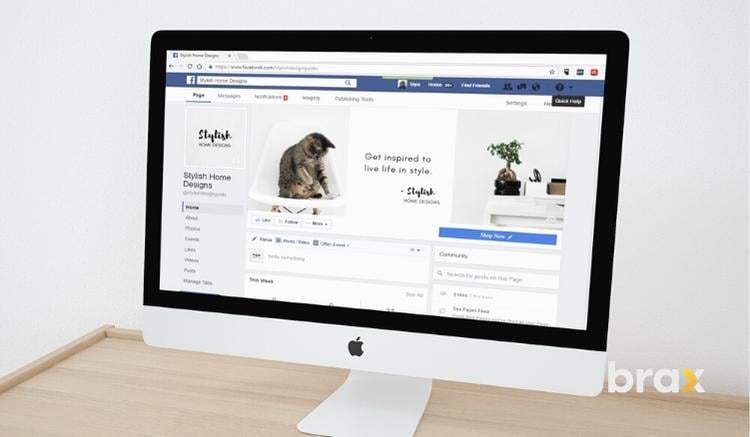
With almost five billion active users between them, Facebook and Instagram offer a vast audience for your products or services. And with the sophisticated targeting options available, you can make sure that your ads are reaching the right people.
Table of Contents
eCommerce and Dropshipping from 2022 and Onwards
Why Use Social Media Ads to Drive More Sales
What can you promote via Facebook and Instagram ads?
Tips and Best Practices for Using Instagram and Facebook Ads for eCommerce
FAQs on using Facebook ads for eCommerce
Before diving in on how to use for eCommerce businesses two of the biggest social media properties under Meta today, let us first take a look at how eCommerce and dropshipping have been faring recently.
eCommerce and Dropshipping from 2022 and Onwards
When the pandemic hit in 2020, businesses all over the world were forced to shut down. However, a few savvy entrepreneurs saw an opportunity in the crisis. eCommerce and dropshipping businesses were able to quickly pivot and adapt to the new reality of social distancing and stay-at-home orders. As a result, these businesses have flourished in the past couple of years.
eCommerce businesses have been particularly successful during the pandemic. Online shopping has become the new norm, as consumers are increasingly comfortable making purchases without having to leave their homes.
This has been a goldmine for entrepreneurs who have been able to quickly adapt their businesses to meet the needs of the new market. What's more, many eCommerce businesses have been able to offer contactless delivery, which has further boosted their popularity.
Niches that flourished included the following:
- Food and restaurants - When going outside was discouraged or even restricted in some areas, online deliveries for groceries, food supplies, and to-go meals boomed. Now that we're all allowed to dine in restaurants and buy our groceries ourselves, many have already developed the habit of purchasing online since it is very convenient.

- DIY, garden, and home improvements - With more time spent at home, people had the opportunity to work on long-neglected home projects. Just take a look at the most common posts and hashtags from 2020 onwards, and you'll find DIY to be among the top.
- Clothes and accessories - many of us have Zoom calls and other virtual meetings as a big part of our daily lives now. As a result, we want to look good on camera, which has boosted sales of clothes and accessories that can be worn on top of our Zoom-appropriate outfits.
- Health and fitness - with gyms closed, people had to get creative with their workouts. At-home fitness equipment, home workout programs and health supplements saw a surge in popularity.
Dropshipping businesses have also benefitted from the shift to online shopping. Dropshippers are able to operate with minimal overhead costs, and they can reach a global market of potential customers.
The pandemic has forced businesses to change the way they operate. But for eCommerce and dropshipping businesses, these changes have been a boon. These businesses have thrived in the past year, and there's no reason to believe that they won't continue to be successful in the years to come, now that people are so used to online purchases.
Benefits of Running an eCommerce Business
eCommerce and dropshipping businesses offer a number of advantages over their brick-and-mortar counterparts.
First of all, they are much easier and cheaper to set up. You don't need to worry about leasing a physical space or hiring staff. All you need is a website and an inventory of products.
Second, eCommerce and dropshipping businesses are much more flexible than traditional businesses. You can sell products from anywhere in the world, and you're not limited by location. All you need to make sure is that you are upfront with the possible shipping costs and delivery lead time.
Finally, e-commerce and dropshipping businesses are much easier to scale than traditional businesses. You can scale horizontally by adding more products to your catalog or vertically by promoting your products more. As your customer base grows, you can simply add more products to your inventory and increase your marketing budget.
Why Use Social Media Ads to Drive More Sales
In the age of social media, businesses are increasingly turning to online platforms to reach their target audiences. And one of the most effective ways to do this is through social media advertising.
By placing ads on popular social media sites, companies and brands can reach a large number of people in a very short amount of time. Here are a number of reasons why you should use social media advertising, particularly Meta Ads, to drive more sales to your store.
These include:
1. Social media ads are more cost-effective than other forms of advertising and can reach a much larger audience.
There's no question that social media has changed the landscape of advertising. In the past, companies would have to spend a lot of money on ads that would only reach a small percentage of their target audience.
But with social media, businesses can reach a much larger audience for a fraction of the cost. Facebook and Instagram's combined number of users have almost reached five billion in 2022!
And because people are already spending so much time on social media, companies can be sure that their ads will be seen by a large number of potential customers.
2. They allow you to hyper-target customers.
Anyone who has ever tried to sell something knows that one of the keys to success is finding the right customer. You could have the best product in the world, but if you're selling it to people who have no need for it, you're not going to make many sales.
This is where social media ads come in. By targeting ads specifically to users who are likely to be interested in your product or service, you can increase the chances that they will buy from you.
When targeting a specific audience and using relevant keywords, businesses can ensure that their ads are seen by people who are most likely to be interested in what they have to offer.
And because social media platforms such as Facebook and Instagram allow you to target users based on their age, location, career, interests, and more, you can be sure that your ads are reaching the right people.
With billions of users, Facebook has a wealth of data that can be used to target ads with laser precision. Whether you're looking to reach new customers or retarget previous buyers, Facebook's targeting options will help you get your message out there.
3. Ads on social media generate a lot of engagement.
In today's competitive market, it's essential to find ways to stand out from the crowd and get people talking about your brand. Social media ads are an excellent way to do just that. With the right strategy, you can use them to generate a lot of interest and engagement for your business.
Here's how it works: by targeting specific demographics and interests, you can ensure that your ad is seen by people who are most likely to be interested in what you have to offer. If they like it, they're more likely to click on it and visit your website or social media page.
From there, they can learn more about your brand or business and decide whether or not they want to become a customer. Your days of showing ads to random users and targeting people based solely on their location are long gone.

4. Paid ads on Facebook provide eCommerce businesses with better conversion rates than other digital marketing techniques.
If you're an eCommerce business, there's a good chance you're always looking for ways to improve your conversion rates. After all, the more conversions you have for the same advertising budget, the higher your profit.
And what's the best way to get more conversions? By using paid ads on Facebook. Yes, you read that correctly. Paid ads on Facebook can actually provide you with better conversion rates than other digital marketing techniques. According to Wordstream, the average conversion rate of Meta Ads for the Retail Industry is 3.26%, and 9.10% in general, across all industries.
How does this happen? When you use paid ads on Facebook, you're targeting your audience very specifically. You can choose to target people based on their interests, demographics, and even their location. This ensures that your ad is only being shown to people who are likely to be interested in what you're selling.
On the other hand, other digital marketing techniques (such as SEO or content marketing) don't allow for such targeted advertising. As a result, your ads are more likely to be seen by people who are not interested in what you're selling, which means they're less likely to convert, thereby lowering your conversion rate.
Another reason why paid ads on Facebook tend to have higher conversion rates is that they create a sense of urgency. When people see your ad, they know that it's only going to be up for a limited time. This encourages them to act quickly and make a purchase before it's too late.
5. You can test as many ads as you want and see which ones work best.
When it comes to marketing, we all want to know what works best. And there's no better way to find out than by testing different ads and seeing which ones outperform the others.
That's why Facebook and Instagram offer businesses the ability to test as many ads as they want in a single campaign. With this feature, you can create different ads and see which ones get the most engagement from users. Not only does this allow you to optimize your ad campaigns, but it also helps you save money by easily disabling ads that don't work.
By allowing you to test as many ads as you want, Meta Ads give you the ability to find the perfect mix of messaging and visuals that work best for your products or services.
6. Meta Ads allow you to control how much you spend, so you can stay within your budget.
Meta Ads provide a great way to control your spending and stay within your budget. You can set a daily limit for yourself, and the ads will automatically stop running once you reach that limit. This means that you won't overspend on your advertising campaign, and you can rest assured that your money is well-spent.
7. Social media ads provide comprehensive reporting and tracking systems.
Facebook's comprehensive reporting and tracking system for ads is unrivaled in the industry. With granular insights into every aspect of your ad campaign, you can track your progress and make adjustments on the fly to ensure maximum ROI.

Facebook's reporting system includes data on everything from impressions and reach to click-through rates and conversions. This wealth of data makes it easy to track the performance of your ad campaigns and make necessary adjustments to improve results.
The system also allows you to split-test different ad creative and target audiences. In addition, Facebook's tracking system also provides valuable insights into your target audience, allowing you to fine-tune your ad targeting for maximum effect.
Ultimately, Facebook's reporting and tracking system is an essential tool for any business that wants to get the most out of its advertising efforts on the platform.
What can you promote via Facebook and Instagram ads?
When it comes to promoting your business, product, or service, Facebook and Instagram offer a powerful platform with a variety of advertising options. But what exactly can you promote via Facebook and Instagram ads? And more importantly, what is not allowed?
Generally speaking, you can promote just about anything on Facebook and Instagram as long as it doesn't violate the platforms' terms of service. Products (or themes) that you can't promote are:
- alcohol
- tobacco
- drugs
- gambling
- adult content
- violence
Also, you cannot promote illegal activity, nor can you market products that are likely to cause harm, are hateful, or are graphic in nature.
Additionally, you cannot use misleading or deceptive advertising practices. You cannot say, for example, that your shampoo can help promote hair growth. This is considered deceptive since, as of press time, there is no proven way to promote hair growth.
Overall, Facebook and Instagram provide a great way to reach a large audience with your promotional message. Just be sure to familiarize yourself with the platform's terms of service before creating your ad campaign.
Tips and Best Practices for Using Instagram and Facebook Ads for eCommerce
Platforms like Instagram and Facebook offer powerful tools for targeting potential customers and promoting your products or services. But if you're not careful, you can quickly rack up a hefty bill without seeing any return on your investment.
So how can you make sure your social media ads are effective? Here are a few best practices to keep in mind:
1. Learn to find your target audience in Meta Ads.
First and foremost, businesses need to have a clear understanding of the target audience. This includes factors such as age, location, interests, and even online behavior. Once this information is known, businesses can start to create targeted ad campaigns that are more likely to resonate with users.
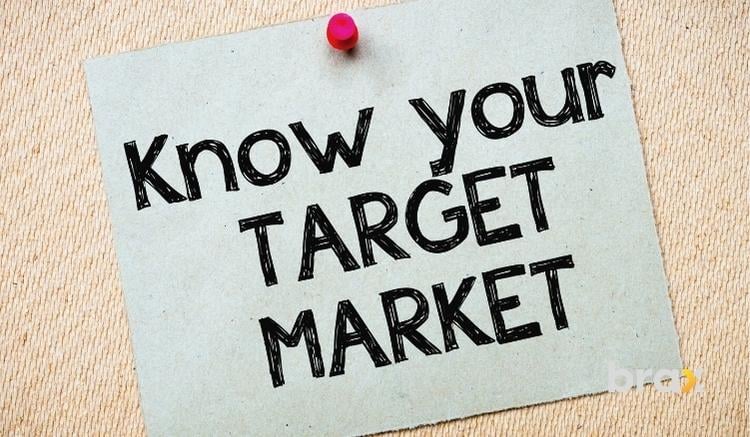
When it comes to finding your target market's interests, the options are literally endless. But where do you even begin?
Lucky for you, we've compiled a list of our top four favorite methods for uncovering your target market's hidden gem:
1. Social media stalking
This one is pretty self-explanatory. Start following your target market on social media and see what they're talking about. What are their interests? What are they passionate about? What websites do they visit? Who are the celebrities and personalities that they follow? Creating a target persona is a great way to get inside your target market's head and understand what makes them tick.
2. Google it
Use Google to your advantage! Search for articles, blog posts, or even forums that relate to your target market. See what people are saying and look for any common thread or trend.
For example, if you're selling products for dog lovers, try searching for "dog gifts" or "dog toys." This should give you a good starting point for finding websites and blogs that cater to your target market.
Take note of this information as you can actually use these when narrowing down audiences during ad campaign creation.
3. Survey says…
Ask your target market directly! Send out a survey or poll and allow them to tell you what their interests are. This is perhaps the most direct method, but it can also be very effective.
4. Study your current customers' buying habits
Another option is to take a look at your target market's buying habits. What kind of products do they usually purchase? What do they tend to spend the most money on? This information can give you a good idea of their interests and what they value.
5. Competitive research
Finally, take a look at your competition. What are they doing that's working? How can you improve upon it? This can give you some great insights into what your target market is looking for.
For this, you can use social listening tools that send alerts and compile information based on competitor brands.
2. Take advantage of Facebook's remarketing feature and dynamic product ads.
Remarketing is a powerful tool that can help you keep your ads in front of interested people, even after they leave your website.
And with Facebook remarketing, you can reach people who have already visited your site or engaged with your brand on Facebook. That means you can show them relevant ads as they browse Facebook and drive them back to your site to convert.
Here's how to remarket to audiences using Facebook ads:
- On the Ad Set creation page, scroll down to Audience
- Under Custom Audiences, select your existing audience or create a new one
We'll discuss more about creating custom audiences later in this article.
Dynamic product ads are a type of remarketing that allows you to show personalized ads to people who have visited your site or mobile app. These ads feature the products that people have viewed or added to their shopping carts, making them more relevant and targeted to each person.
With dynamic product ads, you can reach people at every stage of the purchase funnel, from awareness to consideration to purchase.
For example, if someone visits your website and views a product but doesn't add it to their cart, you can target them with a dynamic product ad later on Facebook or Instagram.
Not only is this an effective way to close the sale, but it's also a great way to keep your products top of mind with potential customers.
To utilize remarketing and dynamic product ads, though, you must first make sure the Meta Pixel is set up properly.
3. Setup Meta Pixel Properly
Installing the Meta Ads pixel on your website is an essential step in being able to track the traffic and user activity that comes from your Facebook ads.
The pixel is a cookieless tracking system that uses a small piece of code to track all of the activity on your website. This code is placed on every page of your website, and it is used to track the number of times someone clicks on your ad, as well as how long they stay on your website. It also monitors other user activity on your webpage, such as clicking on a button, adding to cart, going to checkout, completing a purchase, and so much more!
To properly install the Meta Ads pixel, you will need to add the code to each page of your website or landing page.
Here's how to properly install the Meta Ads pixel on your own:
1. Log in to your Facebook account and go to Facebook Business Settings.
2. Scroll down to "Data Sources" and select "Pixel."
3. Click on the "Add" button.
![]()
4. Follow the instructions on the screen to create your Facebook pixel. The steps will depend on the platform you use.
![]()
5. Test your Facebook pixel to make sure it's working properly.
6. Start tracking your results!
By following these steps, you can ensure that your Meta Ads pixel is properly installed and working correctly. This will help you get more accurate data on your ad campaigns, so you can optimize them for better results.
4. Use custom and lookalike audiences to attract new consumers
When it comes to Facebook ads for eCommerce, there are two main types of audiences you can target: custom audiences and lookalike audiences. Both types of audiences can be extremely valuable in attracting new consumers to your business
Custom Audiences
Custom audiences are made up of people who have already engaged with your brand in some way, such as by visiting your website or making a purchase.
Custom audiences give you the ability to target specific groups of people who are more likely to be interested in your product or service.
For example, if you sell women's clothing, you could create a custom audience of women who have visited your website in the past 30 days. This ensures that your ads are only being shown to people who are actually interested in what you have to offer.
To create a custom audience, you'll first need to gather a list of potential customers from your customer database. Once you have this list, you can upload it to Facebook and create an audience based on it.
Your custom audience can also be based on the results/engagement of your previous ads.
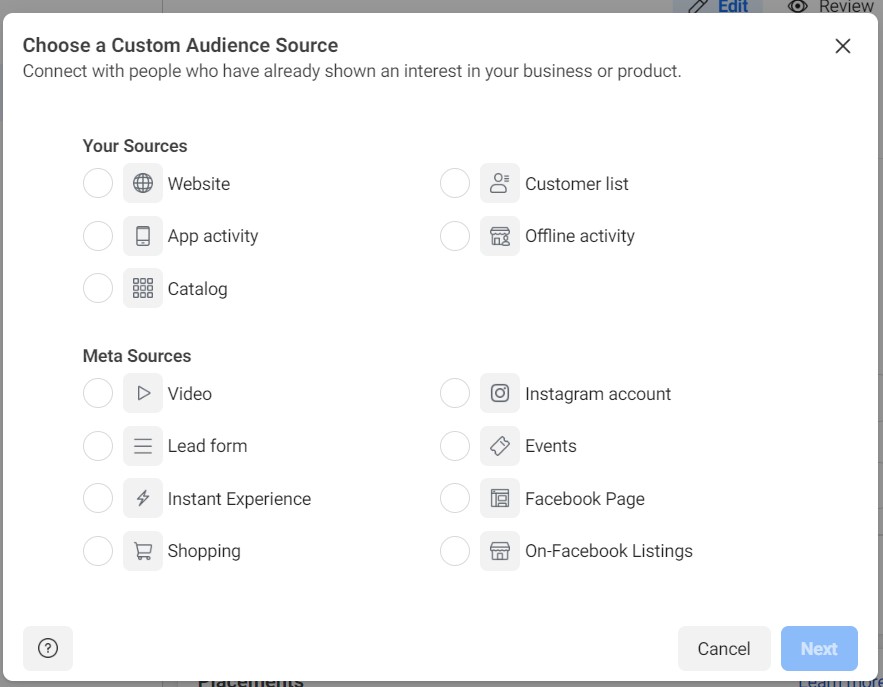
Lookalike audiences
Lookalike audiences, on the other hand, are made up of people who have similar characteristics to your existing customers or website visitors.
For example, if you have a list of email subscribers, you could create a lookalike audience of Facebook users who have similar demographics and interests. This allows you to reach people who might not be familiar with your brand but are more likely to be interested in what you have to offer.
Both custom and lookalike audiences can be extremely valuable in attracting new consumers to your business. By targeting specific groups of people, you can ensure that your ads are being seen by the right people and that you're not wasting your time and money on ads that no one will ever see.
To create a lookalike audience, you'll need to choose a source audience—this is typically your current customer base. Then you should define how similar based on percentage. The lower the number, the higher the similarity. It would be best to set this as 1% to 2%.
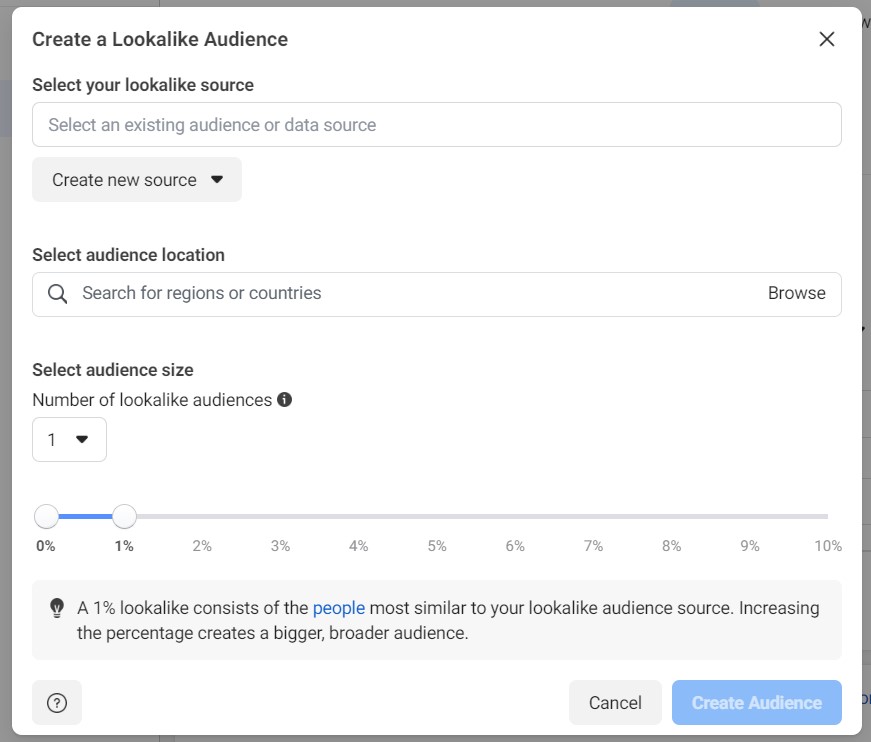
Facebook will then use its algorithms to find other people who share similar characteristics with this source audience. You can then create an ad campaign that targets this lookalike audience.
5. Use high-quality visuals in ads
As anyone who's ever scrolled through their Facebook feed can attest, ads are everywhere. And while some people might find them annoying, the fact is that they play an important role in helping businesses reach their target audiences.
One of the most effective ways to make sure your ad stands out from the rest is to use high-quality visuals. Whether it's a striking image or an eye-catching video, using visuals can help to grab attention and make your ad more memorable.
In addition, using visuals can also help to convey your message more effectively. After all, a picture is worth a thousand words.
What makes for a high-quality visual?
- It should be relevant to your product or service.
- It should also be eye-catching and visually appealing, something that will stop scrollers in their tracks and make them want to learn more about what you're offering.
- It should be original and distinctive, something that will help your ad stand out from the thousands of other ads people see every day.
If you can create an ad that meets all of these criteria, you'll be well on your way to making a lasting impression on potential customers.
6. Utilize Brax for better ad management
As a business owner, you know that advertising is essential to your success. Without ads, potential customers would never know about your products or services.
But creating effective ads can be a challenge, and monitoring their performance can be even harder. That's where Brax comes in.
Brax is a third-party ad management platform that allows you to create, monitor, and optimize your Facebook and Instagram ads—all in one place. You can also manage TikTok ads and native ads from various traffic networks in a single account. That means you can save time and get insights into what's working (and what's not) across all of your advertising channels.
With Brax, you'll be able to see which ads are performing well and which ones need to be tweaked. You'll also be able to track your spending and see how much your ads are costing you.
In short, it is the perfect tool for anyone who wants to effectively manage their Facebook and Instagram advertising. So if you're looking for a way to take your advertising to the next level, be sure to check out Brax. Book a free demo today—you won't regret it!
7. Upload your product catalog
When it comes to Facebook ads, your product catalog is your best friend. By uploading your catalog, you can create dynamic ads that show your products to people who are most likely to be interested in them.
But how do you upload your catalog, and what are the best practices for doing so? Here's everything you need to know.
1. The first step is to create your product catalog.
This can be done using a spreadsheet or an eCommerce platform like Shopify or BigCommerce. Make sure to include all of the relevant information for each product, such as the name, price, and description.
2. Once you have your product catalog ready, you can begin uploading it to your Facebook Business Manager.
First, visit your Facebook Business Settings page. Scroll down to Data Sources and look for Catalog. You must first name your catalog and assign it to a member of your business team within Facebook Manager. It would be best to assign it to yourself as well.
Next, click on Add Items. You will be taken to the main catalog page where you can add the products you want to promote on Facebook.
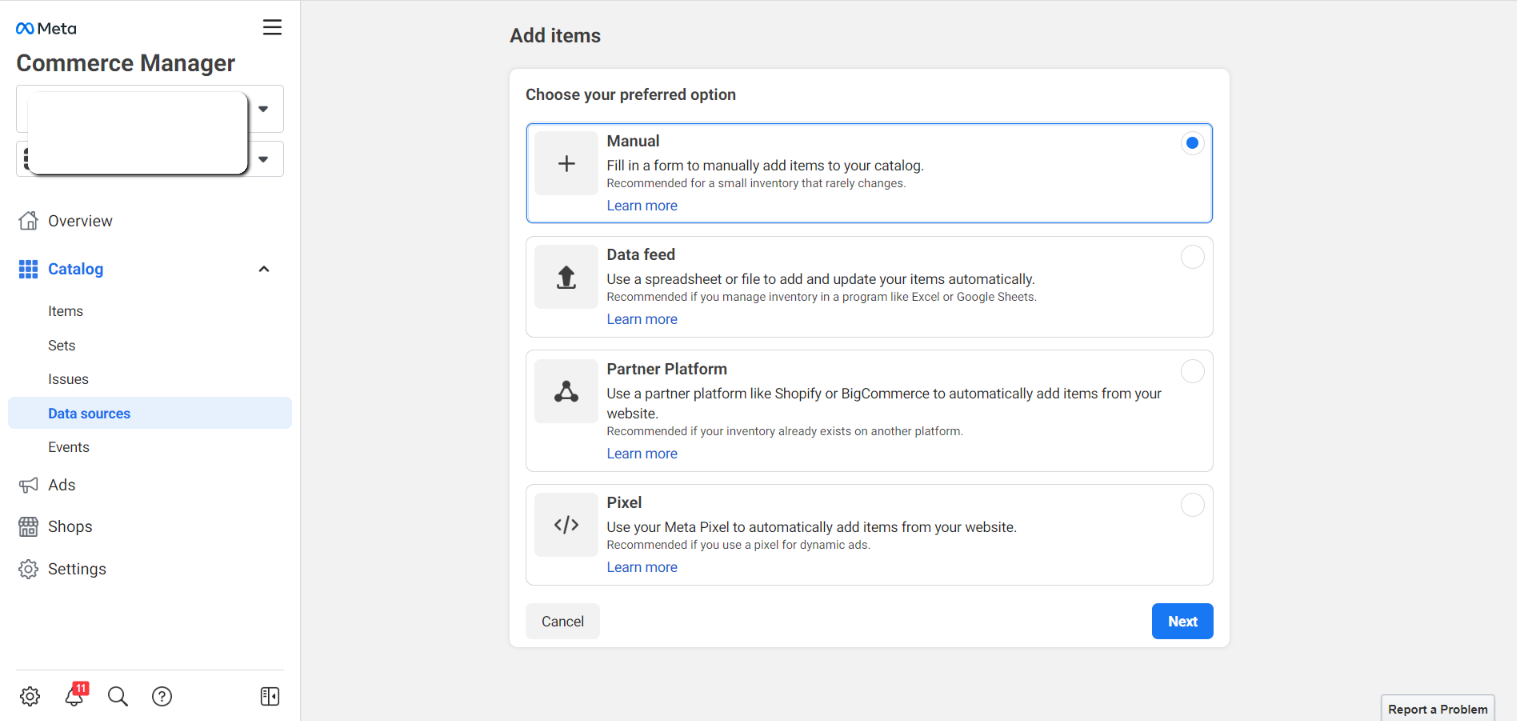
For eCommerce businesses with hundreds of products, it would be best to use a data feed. With this, whatever changes that happen in your online store (such as product inventory, new product line, etc.), your product catalog will always be up to date.
3. Once you're done adding products to your catalog, you'll need to create your ads.
Facebook will automatically generate ads for each of your products, but you can also customize the ads to better fit your target audience. Make sure to include strong visuals and compelling copy to grab attention and encourage clicks.
4. Finally, keep track of your ad performance and make adjustments as needed.
You can use the insights provided by Facebook to see how people are interacting with your ads and what type of results you're getting. By regularly optimizing your ad campaigns, you can ensure that you're getting the most out of your product catalog on Facebook.
8. Choose the best ad types for eCommerce promotions
Choosing the best Facebook ad format for your eCommerce business can feel daunting—there are so many options! But never fear; we're here to help.
To start, consider what your goals are for your ad campaign.
Are you trying to increase brand awareness? Drive traffic to your website? Generate leads? Once you know what you want to achieve, you can start narrowing down your format options.
Brand Awareness Ads
If you're looking to raise brand awareness, then video and carousel ads are great choices. Both formats are highly visual and allow you to tell a story that will connect with your audience on an emotional level.
Recently, video ads on Facebook have been doing so well in raising brand awareness. The platform has seen a surge in video viewership in recent years, and as a business, it's important to take advantage of this trend. By creating video ads, you can create engaging content that will capture the attention of your target audience and encourage them to learn more.

Lead Generation
If you're focused on generating leads, then lead ads are the way to go. These ads make it easy for people to sign up for your newsletter or request more information about your product—without ever having to leave Facebook.
You can also utilize regular post or image ads and then send your audiences to a landing page. This is best if there is other information you need from your potential customer other than what can be filled out in a lead ad.
Website Traffic
If driving traffic to your website is your goal, then image ads, dynamic product ads, carousel ads, video ads, and collection ads are the perfect solution. These ads can include a call-to-action that encourages people to click through to your site, where they can learn more about what you have to offer.
As for ad objectives, the best ones are:
Engagement and Likes
This two help to increase brand awareness and build social proof. By running ads that encourage users to like, comment, or share your content, you'll not only get more people talking about your product, but you'll also create a sense of social proof that can encourage even more people to check out your product.
You can also use the "Boost" option for your posts, though this is very basic and doesn't always provide the best results. Facebook offers comprehensive targeting and marketing settings, use them!
View Content Conversion
If you're looking to increase traffic to your website using Facebook Ads, then you should definitely consider using the "view content" or "view page" objective. This objective allows you to show your ad to people who are more likely to actually click on it and visit your site.
View Content is a type of conversion ad that is better than Clicks because it means the user will actually wait for your page to load. This is best used by dropshippers who believe that you first need to improve your Facebook Pixel's data before running more complicated conversion ads.
Add to Cart Conversion
If you're looking to increase sales using Facebook Ads, the Add to Cart conversion objective is a great way to do it. This optimization objective tells Facebook that you want your ad to be shown to people who are likely to add your product to their cart, even when they are not yet likely to complete a purchase.
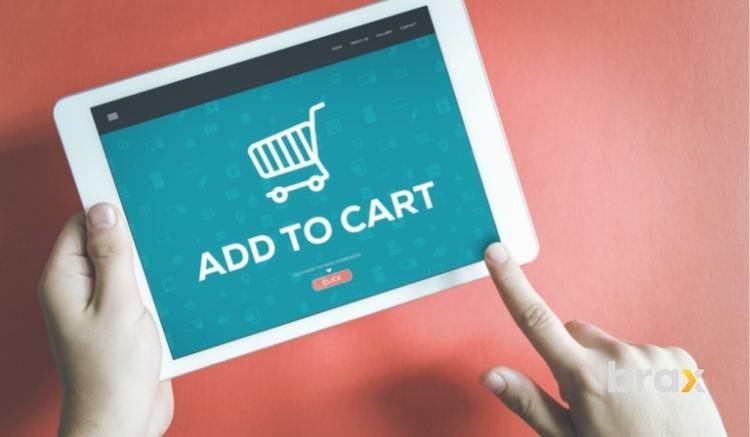
It's just plain easier to get someone to click on an ad and add something to their cart than it is to get them to actually make them buy at the onset. When your Facebook Pixel catches the information that this specific person added the item to the cart and left, you can easily remarket to them in the future.
Checkout Conversion
This step is all about driving audiences deeper into the conversion funnel, and it can be an extremely effective way to increase sales. By using this objective, you'll be able to create ads that target users who are close to making a purchase.
You can then use these ads to provide a little extra motivation, encouraging them to complete the purchase. Plus, you can also use Checkout to create retargeting ads, which can be highly effective in getting people to come back and make a purchase.
Purchase Conversion
This is a no-brainer. Of course, you should use a Purchase Conversion ad to get potential customers to buy from you. If you use custom audiences and remarketing techniques, you can easily increase your conversion rate and ROI with this ad objective.
9. Work with an experienced marketing agency
There's no doubt that Facebook is one of the most powerful advertising platforms out there, especially for eCommerce marketing. But if you're not experienced in the world of online marketing, it can be tough to know where to start. That's where working with an experienced marketing agency comes in.
Brax Managed Service can help if advertising on Facebook ads on your own seems too hard. We provide the expertise, tools, and processes needed to manage an effective Facebook ad campaign from start to finish.

With us, you can focus on your core competencies while our team expertly manages your Facebook and Instagram ad campaigns. We have a team of experienced social media advertisers who will create, place, and optimize your Facebook ads.
In addition, we provide access to proprietary software that would allow you to track and measure your ad campaigns in real-time. As a result, businesses that partner with us can be confident that their Facebook ad campaigns are being managed effectively.
Check out our article on Self Service vs Managed Service on Social Media and Native Advertising to help you evaluate whether you should do this on your own or work with an expert team.
FAQs on Using Facebook Ads for eCommerce
Do Facebook ads work for eCommerce?
Simply put, yes. Where else are you going to find such a large and diverse audience all in one place?
Not to mention, Facebook offers a variety of targeting options that allow businesses to laser-focus their ads so that they reach the people who are most likely to buy their products or use their services.
Will promoting on Facebook Ads be profitable for my retail business?
The short answer is: it depends. Facebook ads can be a great way to reach a large audience and drive traffic to your eCommerce store. However, the success of your campaign will ultimately depend on factors such as your target audience, ad budget, and the quality of your products.
If you're selling products that people are already interested in, and you have the resources to create high-quality ads, then you're more likely to see success with Facebook advertising. It is always how you catch your audience's attention that matters.
Ultimately, the best way to determine whether Facebook ads will work for your e-commerce store is to experiment with different campaigns and see what works best for your business.
Which Facebook ads are best for eCommerce?
There is no one-size-fits-all answer to this question, as the best Facebook ads for eCommerce will vary depending on the products that you sell. However, we've found video ads, carousel ads, image ads, and dynamic product ads to be the most successful in getting customers to buy.
Jump to our discussion on the best Facebook ad types for eCommerce to learn more.
How do I run an eCommerce ad on Facebook?
You have to create a Facebook Ads Account or a Facebook Business Manager. Once that is done, you can actually start creating campaigns!
What is the conversion rate of Facebook ads for eCommerce?
On average, the conversion rate of Facebook ads for Retail and eCommerce businesses is 3.26%, according to Wordstream.
The Bottom Line
Overall, using Facebook Ads to promote e-commerce and dropshipping businesses can be extremely beneficial in increasing sales. When done correctly, Facebook Ads can be extremely targeted, allowing you to reach your ideal customer with ease.
Facebook Ads are relatively affordable, making them a great option for small businesses or businesses on a tight budget. Moreover, the features offered by Facebook Ads, such as targeting, retargeting, and custom audiences, help businesses reach out to their target consumers more effectively.
Facebook Ads also provides tracking and reporting features that help businesses track the performance of their ads and make necessary changes to improve their results.
Of course, as with anything, there is always the potential for things to go wrong. However, as long as you take the time to learn about Facebook Ads and how to use them effectively, you should be able to avoid any major problems. Or, if you're not confident, work with a reliable managed advertising service like Brax. You can book a free demo here!
In conclusion, if you are looking for a way to increase sales for your eCommerce or dropshipping business, Facebook Ads are definitely worth considering.
Did you like this article? You might also like:
- Facebook Ad Placements: A Handy Guide for Every Social Media Marketer
- Creative Real Estate Ads that Let You Close Fast and How to Make Them!
- How to Advertise on Facebook: Everything You Need to Know
- Using the Theory of Loss Aversion in Marketing To Gain More Customers
- The Ultimate Guide to Facebook Carousel Ads: Tips, Tricks and Examples
-
Repurposing Facebook Ads to Native Ads: Why Should You Do It and How

